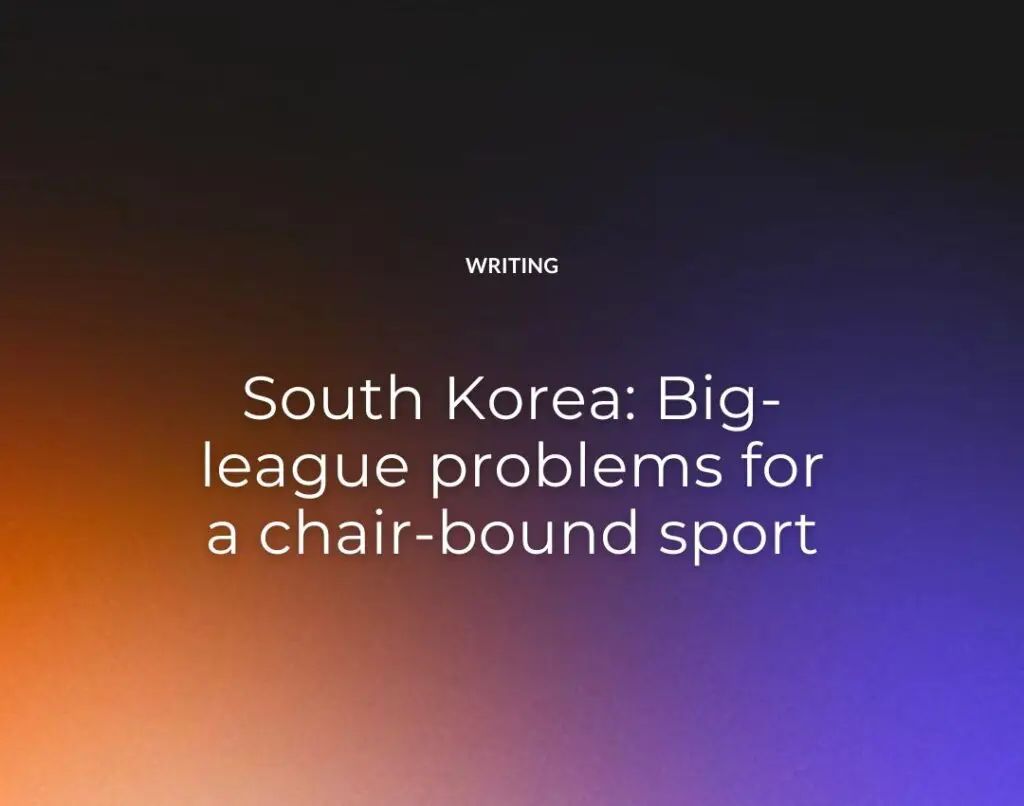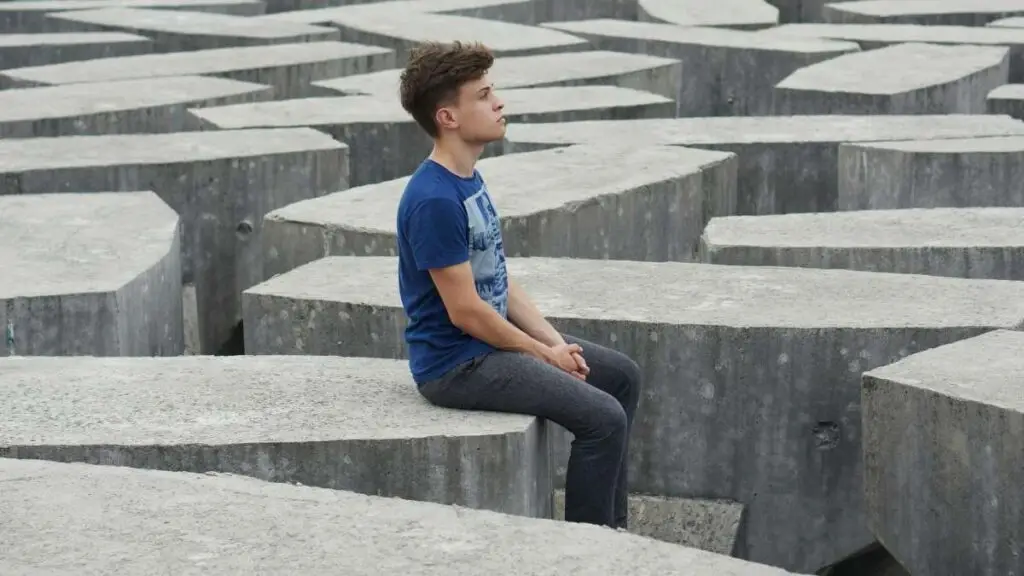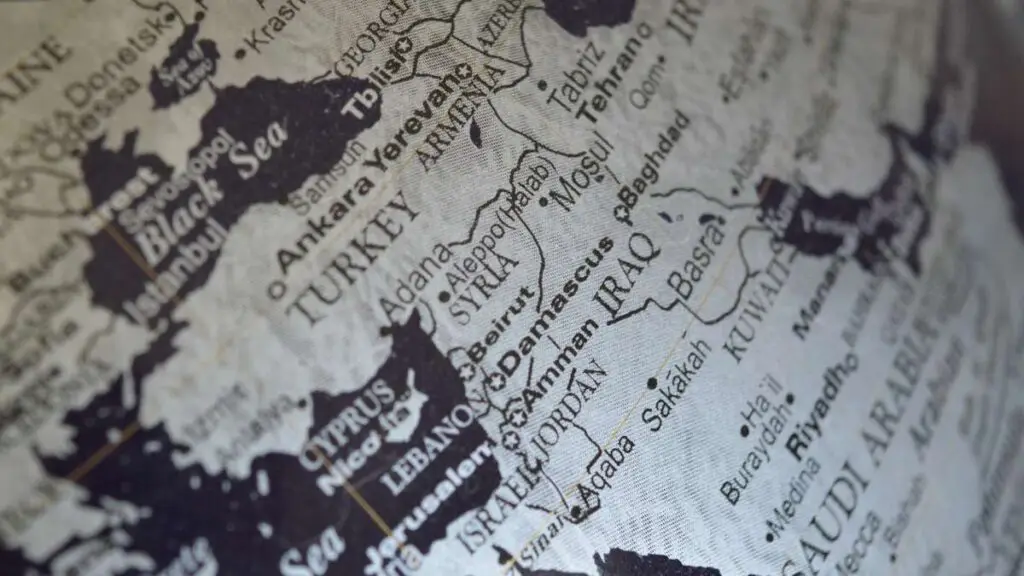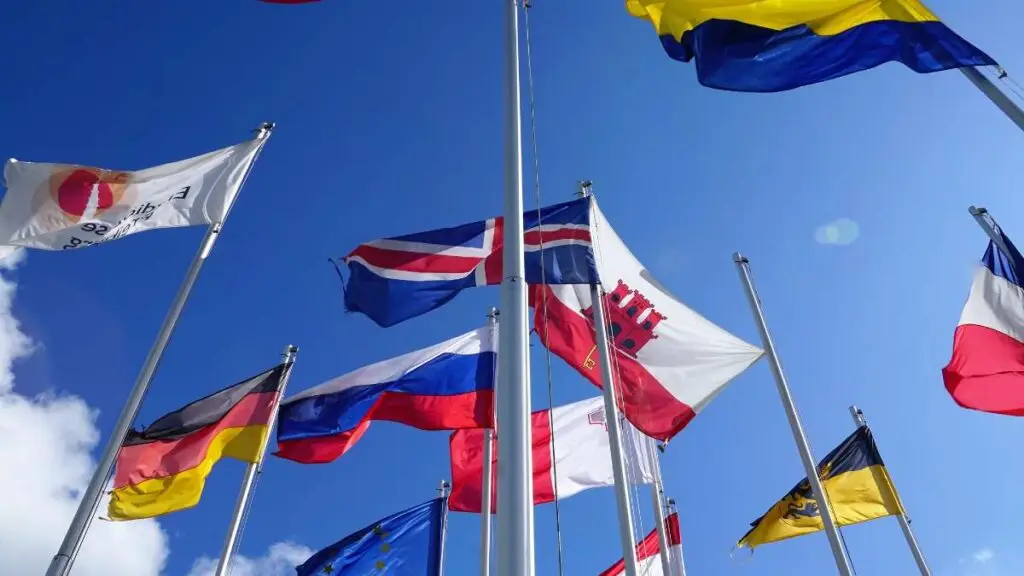By Geoffrey Cain
PRI’s The World
Jun 23, 2010
Editor’s note: Blizzard Entertainment has announced the release date for StarCraft’s sequel. StarCraft II: Wings of Liberty will be available come July 27.
SEOUL, South Korea — Koh Seok-hyun walks on stage wearing a red and white race-car uniform. He sits under glimmering orange lights, and contemplates the strategy he’s been preparing for weeks.
Training has been rigorous: he’s dissected his rival’s style and calculated his own moves down to the second. He plans to finish in 2 minutes and 13 seconds, with no room for error. The 22-year-old wipes sweat from his brow.
The announcer calls it on and Koh’s fingers whiz across the computer keyboard. Quickly, he sends six skimpy zerglings (killer alien bugs) to crush his adversary. As he had hoped, his opponent built a sluggish defense. Game over in 3 minutes, 16 seconds — a bit later than he had hoped but not a poor showing. Koh leaps from his seat, and high fives his teammates. Outside, he is greeted by a crowd of squealing female fans.
In a country where StarCraft has become a national sport, Koh and his teammates live like rock stars. The pastime, a military science-fiction video game, has become a sort of baseball for South Korea. Competitions like this one in Seoul earlier this month, are broadcast across the country and thousands of gamers each year try to become professionals.
The best players are celebrities said to make as much as $300,000 a year. Tabloid magazines drool over paparazzi photographs of the more glamorous gamers dating well-known models and actresses.
But the life of stardom is a hard one, says Koh. That’s because the road to becoming a professional gamer is rocky, part of a cutthroat competition that prompted Koh to dedicate his life to StarCraft in high school.
Every year, about 6,000 South Korean players try to become professionals by entering monthly tournaments; after a few stages of elimination, 50 or so are drafted by professional teams each year. “I couldn’t win the semi-finals several times,” Koh said. “So the last time, I let out all of my anxiety and stopped caring. Then I was drafted.”
Koh’s coach, Ha Tae-kee of a team called MBC, explains how gamers are picked. “I look for players with mental strength instead of only the best ranking,” he said. “Once we reach the top players, the difference between rank one and rank 50 is not a large gap.”
The gamers will need a lot of that mental stamina, he says, because being drafted is hardly the final step to making it as a pro. After Koh joined the team in 2006, he and four other players were still not allowed to compete on television. Rather, they trained in isolation for eight hours a day for one year. Three of those players dropped out before joining the regular matches.
But as a mafia-style scandal sweeps across the professional StarCraft league, many are questioning whether some players have taken the game too far. Last month, authorities charged 16 people with illegal betting and match rigging in a debacle that has touched some of the most revered players on the peninsula. Police alleged that three brokers from an illegal gambling ring had since the mid-2000s offered players between $2,000 and $6,000 to purposely lose matches.
South Korean law prohibits the police from releasing the full names of those implicated. But of the 11 players charged, at least two have been forced to retire and another five have apologized publicly. “I can only say that I will do my best to reflect on my actions and to be discharged as a better, more rational person,” one charged player, Moon Sung-jin, wrote on his online profile on CyWorld, a South Korean social networking website. “I am truly sorry once again.”
Some Korean commentators have been comparing the incident to the 1919 Chicago White Sox Scandal, when eight team members were banned for life from playing professional baseball — after they purposely lost the 1919 World Series in exchange for bribes from gamblers. That’s a testament to how central StarCraft has become to sports in South Korea.
In recent months, other aspects of the pro-gaming circuit have come under fire. At an industry conference last month, one StarCraft newspaper columnist criticized low living standards in “StarCraft academies,” or dormitories where amateur players practice for entire days to become professionals.
In April, the government responded to the growing problem of video game addiction by ordering a national night-time curfew for gamers. Starting in September, players under 18 will be disconnected from their games from midnight until 8 a.m. (Existing laws already bar teenagers from visiting internet cafes, or “PC Bangs” in Korean, at night time.)
Lawmakers approved the stratagem right after a bizarre gaming-related death in March: police discovered that a 3-month-old infant had starved because her parents were too busy raising a fake baby on a computer game in an internet cafe.
Still, that step has put some in the industry on edge — especially for a massive domestic market valued at $2.4 billion in which 30 million people (mainly teenagers) are thought to play regularly.
“Korea is popular for its gaming industry,” said Koh Byung-hun, head of the Korea Game Development Association, a trade association based in Seoul. “This kind of regulation is contrary to what the government says it wants for the industry.”
With slews of problems arising, lawmakers might be bracing themselves for a second round of embattlement later this year: the release of StarCraft II, though no official date has been set.
In April, the Korean game rating board gave the sequel an “adults only” rating, a stamp of violence that the United States-based creator of StarCraft, Blizzard, immediately appealed. “By revising some parts pointed out by the board, we … finally received a 12+ rating,” said Yoon Ji-yoon, a Seoul-based spokesperson for Blizzard.
StarCraft II is mostly safe from government hands — for now. The Korean e-Sports Players Association (KeSPA), a governing body for video game sports, was fervent about not discussing their plans for StarCraft II with GlobalPost. And with lots of money and matches on the line, industry insiders appear to be taking the sequel as seriously as its predecessor.
The article was originally published in PRI’s The World
See Also:





